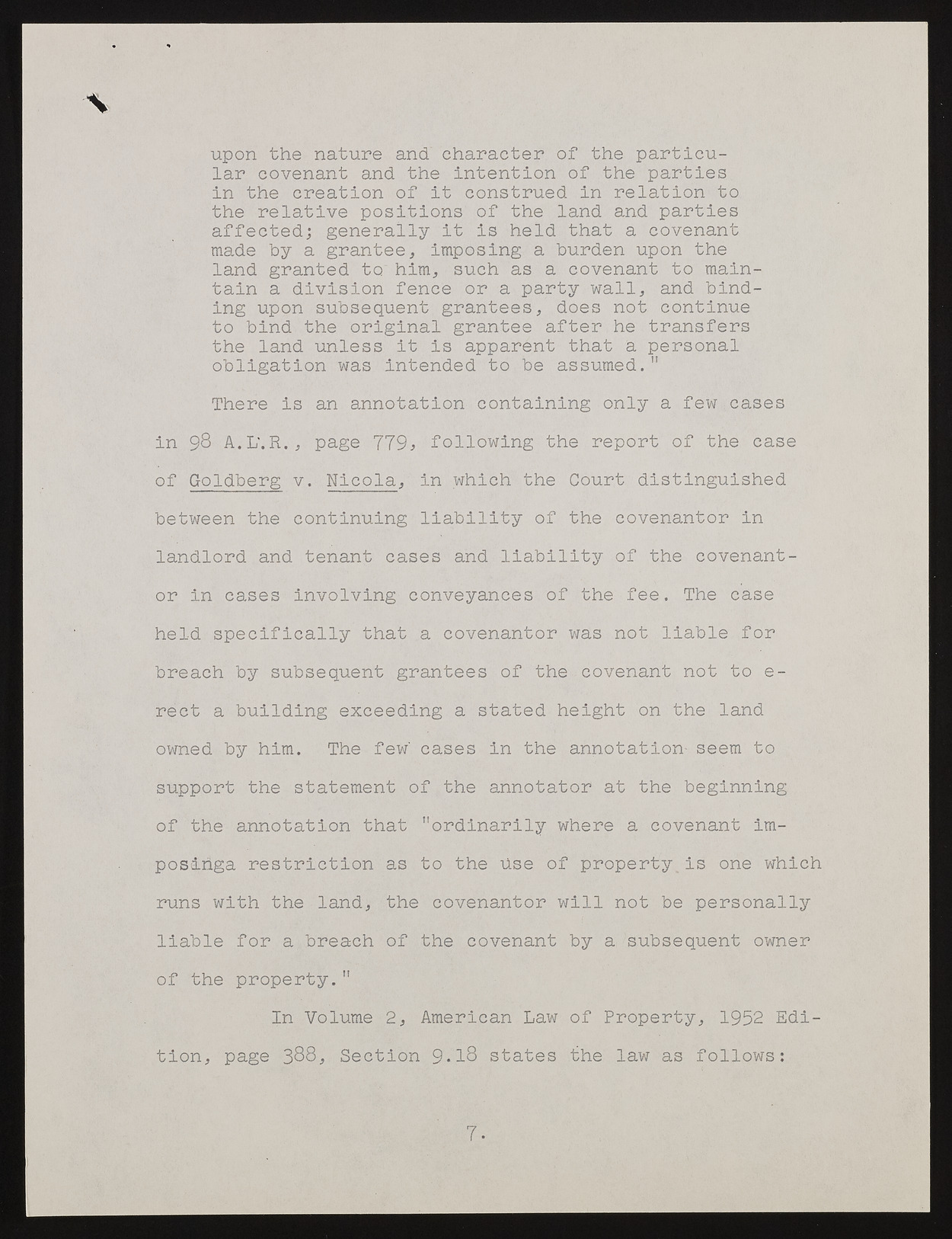Copyright & Fair-use Agreement
UNLV Special Collections provides copies of materials to facilitate private study, scholarship, or research. Material not in the public domain may be used according to fair use of copyrighted materials as defined by copyright law. Please cite us.
Please note that UNLV may not own the copyright to these materials and cannot provide permission to publish or distribute materials when UNLV is not the copyright holder. The user is solely responsible for determining the copyright status of materials and obtaining permission to use material from the copyright holder and for determining whether any permissions relating to any other rights are necessary for the intended use, and for obtaining all required permissions beyond that allowed by fair use.
Read more about our reproduction and use policy.
I agree.Information
Digital ID
Permalink
Details
More Info
Rights
Digital Provenance
Publisher
Transcription
? upon the nature and' character of the particular covenant and the intention of the parties in the creation of it construed in relation to the relative positions of the land and parties affected; generally it is held that a covenant made by a grantee, imposing a burden upon the land granted to' him., such as a covenant to maintain a division fence or a party wall, and binding upon subsequent grantees, does not continue to bind the original grantee after he transfers the land unless it is apparent that a personal obligation was intended to be assumed." There is an annotation containing only a few cases in 98 A.L’.R., page 779> following the report of the case of Goldberg v. Nicola, in which the Court distinguished between the continuing liability of the covenantor in landlord and tenant cases and liability of the covenantor in cases involving conveyances of the fee. The ease held specifically that a covenantor was not liable for breach by subsequent grantees of the covenant not to e- rect a building exceeding a stated height on the land owned by him. The few' cases in the annotation- seem to support the statement of the annotator at the beginning of the annotation that "ordinarily where a covenant im- posihga restriction as to the use of property.is one which runs with the land, the covenantor will not be personally liable for a breach of the covenant by a subsequent owner of the property." In Volume 2, American Law of Property, 1952 Edition, page 388, Section 9.18 states the law as follows: 7.

